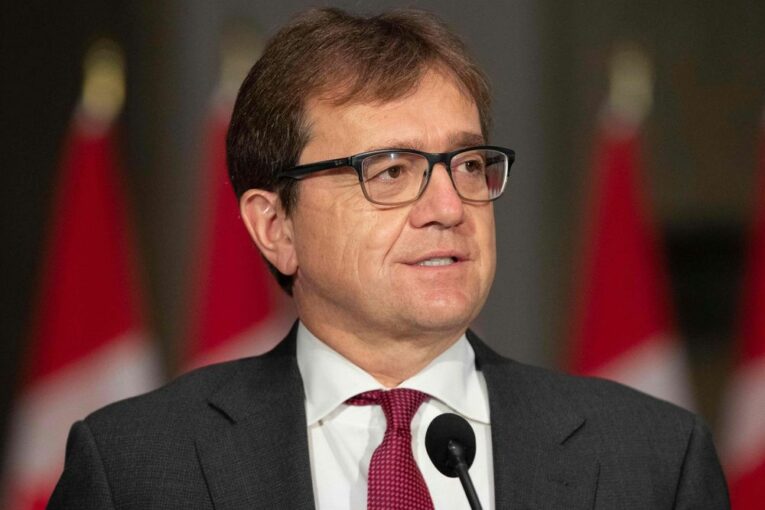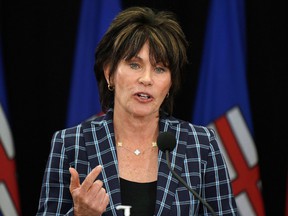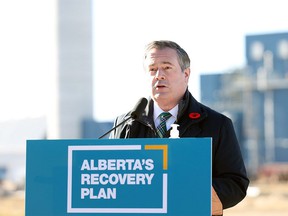
Alberta and Ottawa have been at each other’s throats for so long on energy policy, it’s become a reflex for each side to put their elbows up at every meeting.
Like hockey players going into the corner to retrieve the puck, each side does so preparing for impact.
The energy fault lines are deep between Alberta and the oilpatch on one side and the federal Liberal government on the other: Bill C-69, pipelines and now a cap on oil and gas sector emissions.
But perhaps we’re heading into a new era, a period where each side realizes they must co-operate to achieve their own goals, while keeping a wary eye on the other camp.
New federal Natural Resources Minister Jonathan Wilkinson sat down for the first time with oilpatch and business leaders in Calgary on Wednesday and Thursday. He also met separately with Alberta Energy Minister Sonya Savage.
“What I heard from the CEOs, as well as others in the energy sector today, was that they really want to collaborate, they want a partner, they want us to work together,” Wilkinson said in an interview.
“I hope that both sides are prepared to put their elbows down.”
Similarly, Savage said they talked about areas of mutual interest.
“I take Minister Wilkinson at his word,” she said. “There is a willingness to work together.”

The reality is they all have to get along if the country is to meet ambitious emissions targets, if the industry is to attract capital, and if both sides are to invest in decarbonization projects and create jobs.
It all sounds promising.
However, you only need to get cross-checked once from behind to restart the hostilities.
“I’d walk away from it and say (to Ottawa), ‘If you do what you say you’re going to do, and actually listen to industry …’ then you feel very encouraged,” said Whitecap Resources CEO Grant Fagerheim, who was in Thursday’s meeting with Wilkinson.
“Historically, that’s not been the case. It’s been empty promises.”
The federal minister believes progress can happen because Canadians understand climate change is an existential threat and both sides want to lower emissions, while also promoting the economic interests of the provinces and Canada.
Those reassurances need to be backed up with action.
The declaration by Prime Minister Justin Trudeau at the COP26 climate summit that Canada will impose a cap on emissions from the oil and gas sector — making it the first major oil-producing country to do so — certainly triggered anger within Alberta’s government.
“It seems to have been an improvised talking point for the Glasgow audience,” Premier Jason Kenney said Thursday.
Kenney is awaiting details on Ottawa’s promised federal tax credit for carbon capture, utilization and storage (CCUS) projects, which is still being ironed out.
Alberta and the industry also want to see policy certainty going forward, as the Trudeau government has changed national emissions targets several times since the 2015 Paris accord.
“Is there frustration and mistrust? Yes, of course, there is, no question. But our investors are demanding movement,” said one oilpatch executive.
“We need to be on the bus, but that doesn’t mean we won’t produce energy.”

The UCP government is seeking more than $30 billion in federal incentives over a decade to ignite investment in CCUS.
A coalition of six of the largest oilsands producers, which are working together to reach net-zero emissions by 2050, have previously pegged the cost of their long-term plans at about $75 billion.
Other companies have their own ambitions for hydrogen and carbon capture projects.
Shell, which is a partner in the LNG Canada mega-project, recently proposed a large-scale carbon capture and storage development at its Scotford refinery and chemicals plant near Edmonton.
Shell Canada country chair Susannah Pierce, who met with Wilkinson on Wednesday, said they discussed how to produce clean and affordable energy while striving to meet climate objectives and ensure a robust economy.
“We are all Canadians and I think we all view that there’s an opportunity and an urgency to come together,” Pierce said in an interview.
“I do think people are tired of the friction and the polarization and this is an opportunity to come together and say we share a goal.”
About 40 senior leaders from Suncor, TC Energy, Imperial Oil and other companies were at Thursday’s meeting, which was organized by the Business Council of Alberta and Calgary Chamber of Commerce.
“There is a massive potential for Alberta and Canada to be a leader and a global hub in energy transition and emissions reduction,” said Adam Legge, president of the Business Council of Alberta.
“That is definitely something we can all get behind.”
Yet, trust will need to be earned on all sides.
Introducing an emissions cap on the oil and gas sector, starting in 2025, has the Alberta government watching closely.
As Savage pointed out, provinces have the constitutional authority to regulate natural resource development, not Ottawa.
However, she said the meeting with her federal counterpart was productive as they discussed critical minerals, hydrogen and carbon capture technology.
“The first test will be where we land with (CCUS) and whether that investment tax credit that ultimately comes out will be sufficient to give our industry a path forward,” she said.
Details on the oil and gas emissions limit will need to be worked out in short order as the cap kicks into place in 2025. Wilkinson pledged there will be more discussions with the industry.
“We need to actually sit down and talk about what is reasonable,” he added. “So that’s a commitment I made to the sector today, that we want to engage.”
Engagement is the first step towards co-operation. It also begins with putting the elbows down and skating towards a common goal.
Chris Varcoe is a Calgary Herald columnist.
You can read more of the news on source
